
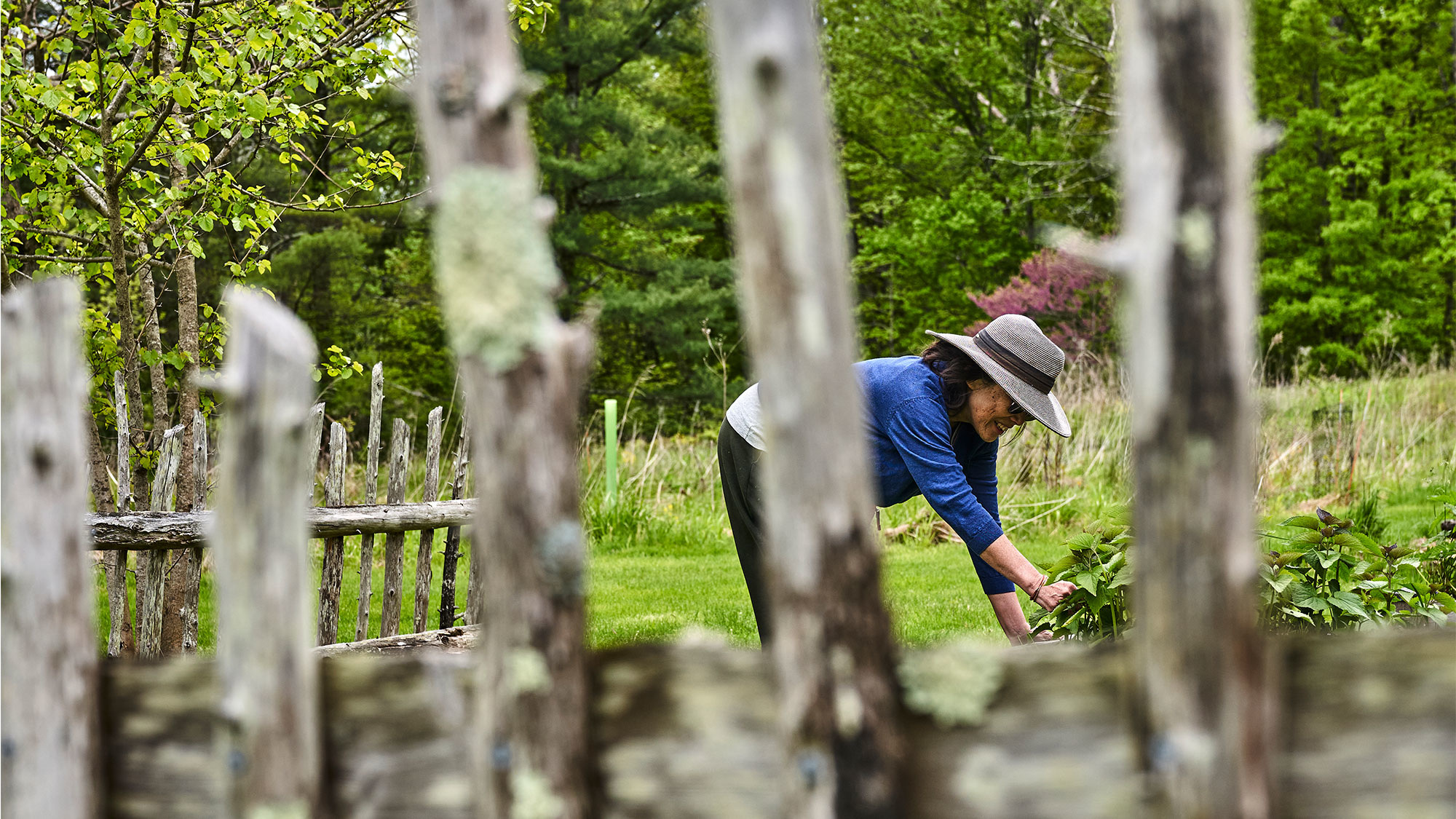
Meet Tama Matsuoka Wong, the Forager Who Brings Weeds to New York’s Top Restaurants
What do a pillar of haute gastronomy, a Harlem cocktail bar, a buzzy Korean restaurant, and a pioneer of vegetarian cooking all have in common? A 5-foot-tall forager by the name of Tama Matsuoka Wong, who supplies them with bagfuls of wild chervil, cattail shoots, sumac, and chickweed, all picked fresh that morning.
It’s early April but it feels like summer when a group of cooks from Oxalis arrives at Tama’s home in Hunterdon County, N.J., roughly a two-hour drive from the Brooklyn restaurant. As the car edges into the driveway, a gravely path is flanked on either side by old white houses. And in lieu of a backyard: An open meadow with unruly plants, everywhere. All grow wild, some in makeshift garden beds. There are a couple of still-naked trees, a little wooden fence. The beginning of a forest ensconces it all.
Tama is out on the deck of her converted farmhouse, a straw hat in hand. She’s stretched out on a blue lawn chair that overlooks her 28-acre meadow and property, dressed up in beat-up Le Chameau wellington boots and pink lipstick that matches her magenta sweater. This is the first time some of the cooks are meeting the woman who’s been supplying them with obscure wild plants, like woodruff or the aerial bulblets on top of wild garlic stems.
“When people look at this, this is not what they want,” she says, gesturing towards her wild meadow, the opposite of the American ideal, that of a manicured lawn.
“When I look at this, I think it’s a buffet.”
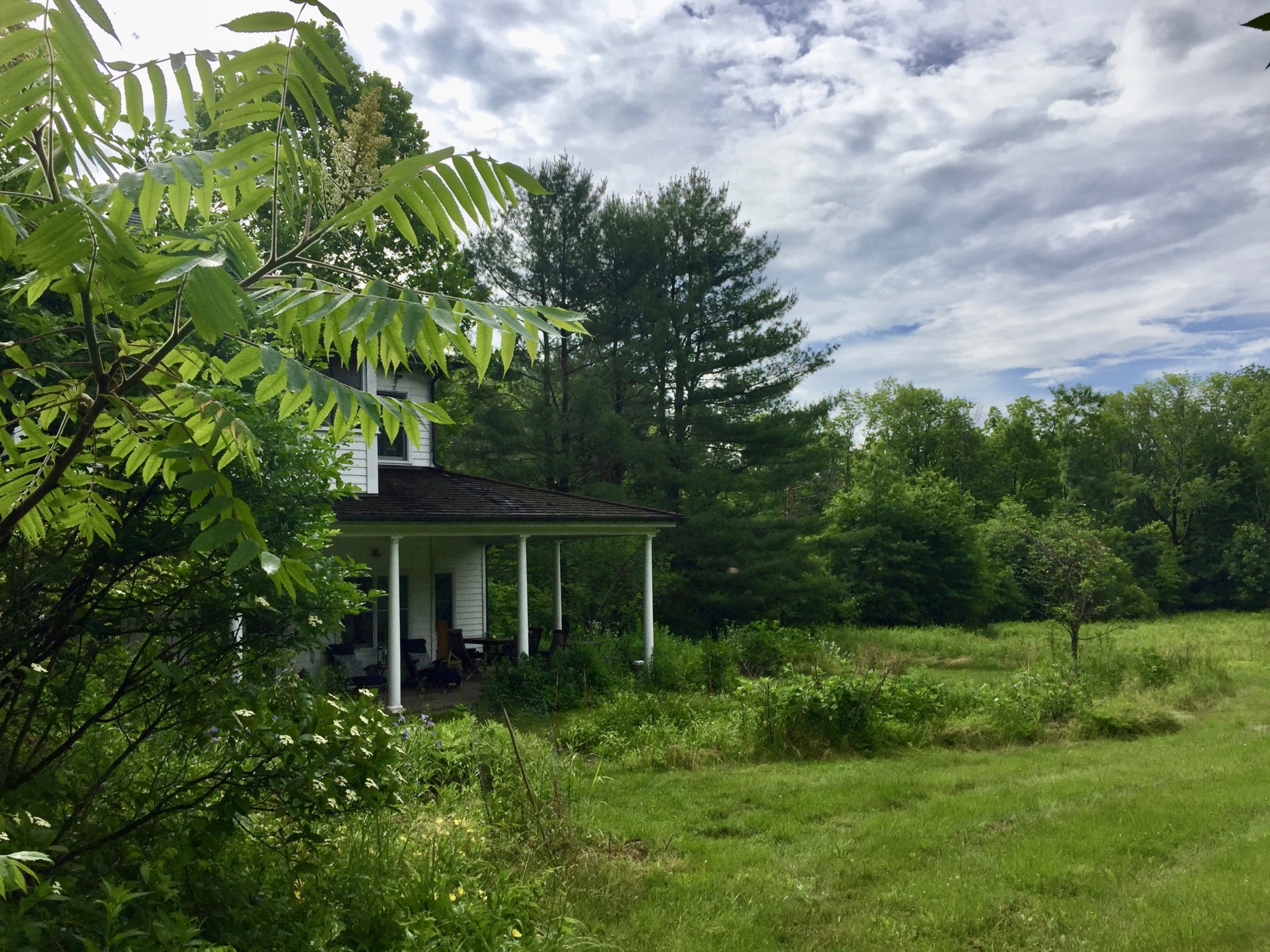
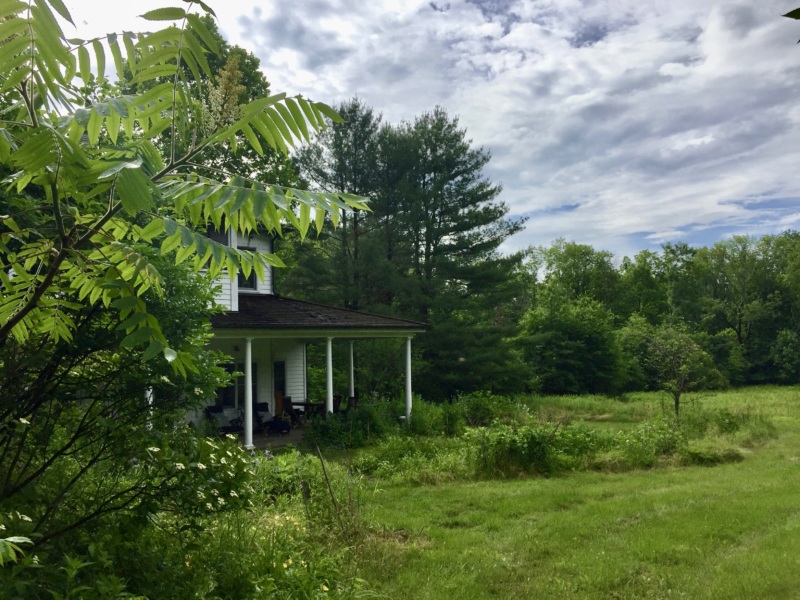
She didn’t always think that way.
Tama’s an old family friend. For half of my life, she was Tama the corporate lawyer. But for the past 12 years, she has been Tama the forager, weed eater, and meadow doctor.
How did all this happen? Technically, when she killed her tomato plant.
Tama and her family of four had just moved from Hong Kong to New Jersey. It was the first time she had owned a place with this much open space and land. And after living in the world’s most densely populated cities, she tried to make a garden. She planted tomatoes. They died very quickly. In their place, weeds sprang. And they were everywhere.
“What I started to realize was the stuff that was growing there was actually really good,” she explains. “They were stronger and actually, in some ways, more beautiful — they didn’t have that kind of fleshy, lurid look that you can see if you go into a nursery sometimes.”
She took a step back and saw the possibilities of the land. “I got obsessively involved into plants,” she smiles.
Tama joined her local conservation groups, absorbing knowledge from every wild plant enthusiast and expert around. She started cataloguing and indexing the plants she encountered, asking friends and relatives to send her books from Japan, China, and France to help her figure out which ones were edible.
When her Japanese father visited with some of his friends, they were all swept away with nostalgia when they spotted hakobe. To anybody else, it was just a weed — chickweed. But to them, it was one of the seven precious herbs of spring in Japan.
She started to become locally known for her meadow and weeds. She got involved with the New Jersey Audubon environmental society and her local Hunterdon County Land Trust. She became a steward that preserves protected lands along the creek that runs close to her home. And in 2009, she founded her business, Meadows and More, consulting on meadow projects on the side — she hadn’t left her banking job to become “a poor forager” just yet, she jokes. She was just foraging for herself.

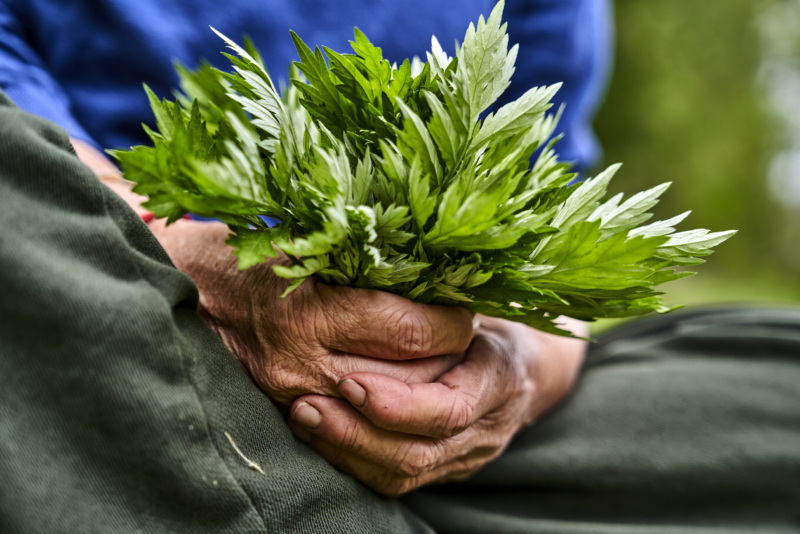
The funny thing is, Tama never intended to work with restaurants.
“I’m not a chef-foodie person; I’m a plant person,” she says. But take one look at her kitchen, which her architect husband Wil Wong custom built to her petite size (wok station included), and you’ll realize: Tama knows food.
After tasting, cooking, and experimenting with the wild plants in her field, she realized edible weeds were too often relegated to hippie tea and survivalist eating. She wanted more out of them. She wanted better recipes.
By some twist of fate, she got them at Daniel. When Tama and her husband were invited to dinner at the celebrated French restaurant, their friends insisted she bring some of her weeds. They knew of her recipe plight and reasoned that if the cooks at Daniel couldn’t figure out a way to make them taste great, who could?
So, Tama brought a gallon Ziploc bag’s worth of wild anise hyssop to New York’s temple to haute French cuisine. She didn’t even know who Daniel Boulud was then, she jokes. But the kitchen’s chef de cuisine, Eddy Leroux, was intrigued. That night, he created a dish of shrimp, Ibérico ham, and melon with anise hyssop vinaigrette, and his then-pastry chef, Dominique Ansel, created an anise hyssop and yuzu sorbet. Tama and Eddy started a partnership then and there. (This was 2009. One year later, The World’s 50 Best would rank Noma at the number 1 spot, propelling René Redzepi and his hyper-localized foraged cuisine on the international stage.)
Tama would bring Eddy whatever wild plants she had on hand, and he would try to extol their flavors and make recipes from them. In 2012, Tama and Eddy published “Foraged Flavor: Finding Fabulous Ingredients in Your Backyard or Farmer’s Market”; in 2013, it was nominated for a James Beard book award.
Soon after, demand flooded in. Through word of mouth, Tama became a regular sight to cooks working morning prep at some of New York’s buzziest restaurants — her emblazoned white “Meadows and More” refrigerated truck parked somewhere along the kitchen backdoors and side entrances of Dirt Candy, Atoboy, abcV, Blanca, Gramercy Tavern, Sugar Monk, and Khe-Yo, among others.
I thought, ‘My God, this woman really knows’ … There’s a sense of balance there, using her ingredients. It gives you a sense of harmony. There’s no greed.— Ektoras Binikos, Sugar Monk Co-Founder
To Eddy Leroux, who still helms Daniel, it’s not hard to see why.
“The freshness, first of all, it’s so pristine. You can see a huge difference,” he says. “The shelf life is much longer than any of the vegetables or herbs you can buy in the market.”
Quality of produce is something every chef in town seeks. But even more so, Tama brings an eco-awareness lens to the table.
“I thought, ‘My God, this woman really knows,’” says Ektoras Binikos, Sugar Monk’s co-founder. “She has such a sense of nature. She tells me, ‘You have to pick the sumac at a certain time, it has to be a certain color, you have to taste this.’ You know, it’s such a precise thing. I truly love working with her,” he says. “There’s a sense of balance there, using her ingredients. It gives you a sense of harmony. There’s no greed.”
In her own way, Tama is teaching some of New York’s most acclaimed industry people how to do and source better. Take the greenmarket starlet of spring: ramps. Ramps are native plants and in Tama’s foraging code, the no-no color red (more on that later).
“The other day we were talking about ramps, and she refused to give me the bulb,” says Leroux. “For five years now, we only use the leaves, and keep the bulbs in the ground. I trust the way Tama forages and the knowledge she has.”
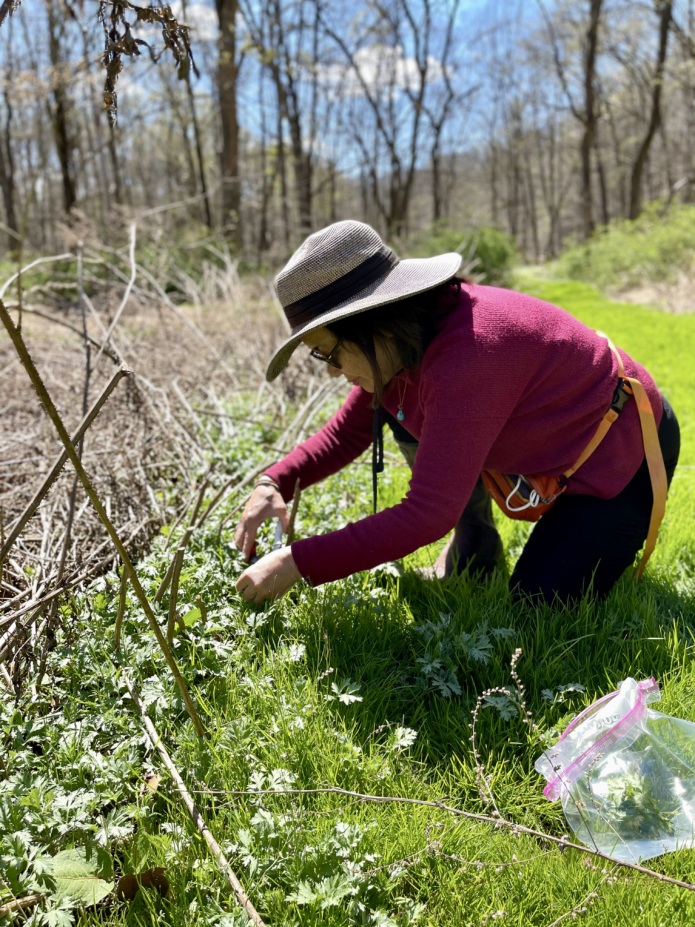
Tama’s meadow is home to over 225 wild plant species, and she can rattle any of them off the top of her head.
Not just their name, but their lifecycle, their ecology, whether they’re native plants or not — if not, where they immigrated from, and which ancestral culture ate them in this or that way. She’s a walking encyclopedia, and her passion is infectious.
You can see it in the way she and Nico Russell talk plants. The chef-owner at Oxalis has been working with her since he opened the restaurant — itself named after the wild yellow wood sorrel — in late 2018.
Tama and Nico are touring her meadow and geeking out over the weeds — Tama talking quickly and eloquently along the way. When she’s excited about something, she speeds up her speech, and her voice goes into the higher pitches. Others, like Nico, are quickly seduced into it, matching her enthusiastic tune. It’s hard not to liken it to kids at a candy store.
“I do have a chickweed patch, but someone else has dibs on it!” she laughs, apologizing to him.
It’s okay, we’re about to move to one of the fields she stewards for, she explains, which she scouted earlier in the week, and has some.
The winding car ride over is a primer in and of itself: Tama points out skunk cabbages that look like large salad leaves (“they’re distinctively stinky”), patches of yellow flowers called lesser celandine (“once it flowers, don’t pick it,” she commands), and interrupts Nico mid-sentence with an excited “Spicebush!” which she spots and shows us through the window. “It’s everywhere,” she beams.
We drive along the Wickecheoke Creek and pull over in the middle of nowhere. Tama leads us off the side of the road to a beautiful green field untouched by human hands — sunny blue skies, chirping birds and all, as if on cue. She gives us a mini warning about ticks — “check behind your ears after we’re done” — and lets us loose. Nico splits and dispatches his cooks to pick things for the restaurant. For the next hour and a half, we forage.
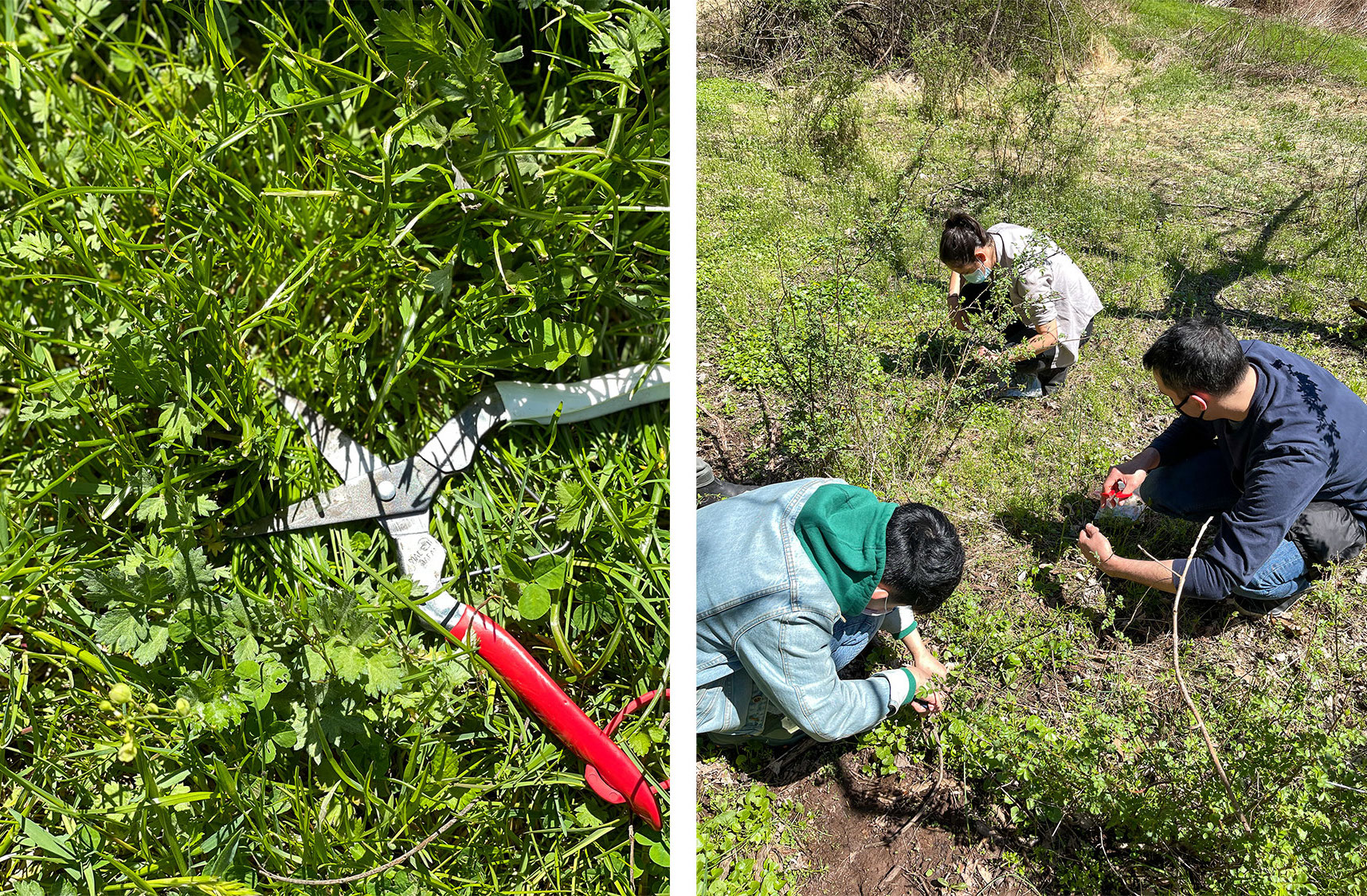

I stay with Tama in a patch of mugwort, her latest weed crusade. “I’m trying to get people into it,” she explains as she cuts the dark green leaves with her well-worn but still-sharp shears. As she fills out a gallon Ziploc bag, then two (so I may take one home to make her favorite potato-and-mushroom mugwort soup), she explains how mugwort was used to repel insects in medieval times, how it’s used in traditional Chinese medicine via cupping, how it’s lightly herbaceous and brings out the umami out of anything it’s paired with when it’s picked young, but develops a stronger, more matcha-like flavor once it matures. She plans on printing out and including the soup recipe right in the mugwort clam shells she delivers to Farm to People, to get home cooks started. Every so often, an Oxalis cook stops by.
“Tama, what’s this?” “What’s that?”
“You probably shouldn’t have picked that,” she says to one of them, who mistook jewelweed for chickweed. “But it’s okay.”
Tama’s mission is one of sustainability first and foremost. Her interest is in the land and how the plants relate to it. She’s created a strict foraging code for her book, assigning colors to plants, and she’d love nothing more than for fellow wild plant enthusiasts and foragers to abide to it, and for cooks to understand it.
The color green is for non-native and invasive plants — you can pick as many of these as you like. Yellow is for native plants that act “weedy,” like yellow wood sorrel. You want to limit yourself for those. Finally, red is for native plants that are specialists, meaning they only live in very specific areas and should not be taken out of the wild. Like the aforementioned ramps.
“It’s not responsible to dig something out and try to take it home,” Tama says of these specialist plants. It’s one of the reasons why the conservation people she works with, whether at Audubon or her land trust, embrace what she does. “If I didn’t have that way of doing business, they may think that foraging is plundering, right?”
Most everything we’re foraging in the field is the Tama-approved, color-code green. I leave with my gallon bag of mugwort and a “Thank you!” purple flower shopping bag filled with handfuls of flowering garlic pennycress and thin stalks of wild onion.
The next day, the Oxalis team prepares mugwort vinegar, makes garnishes out of garlic mustard, and cooks chicken over wild juniper branches for the restaurant’s ever-changing prix fixe menu.
Meanwhile in Manhattan, Daniel Boulud’s eponymous flagship is layering Tama’s pickled Japanese knotweed into a dish of Wagyu beef and foie gras.
At Tribeca’s Laotian restaurant Khe-Yo, chef-owner Soulayphet “Phet” Schwader is stir-frying hanger steak alongside her wild bamboo shoots.
And in Harlem, cocktail speakeasy Sugar Monk adds dashes of her homemade fig leaf syrup to its cocktails.
That night, I make the mugwort soup — it’s delicious.
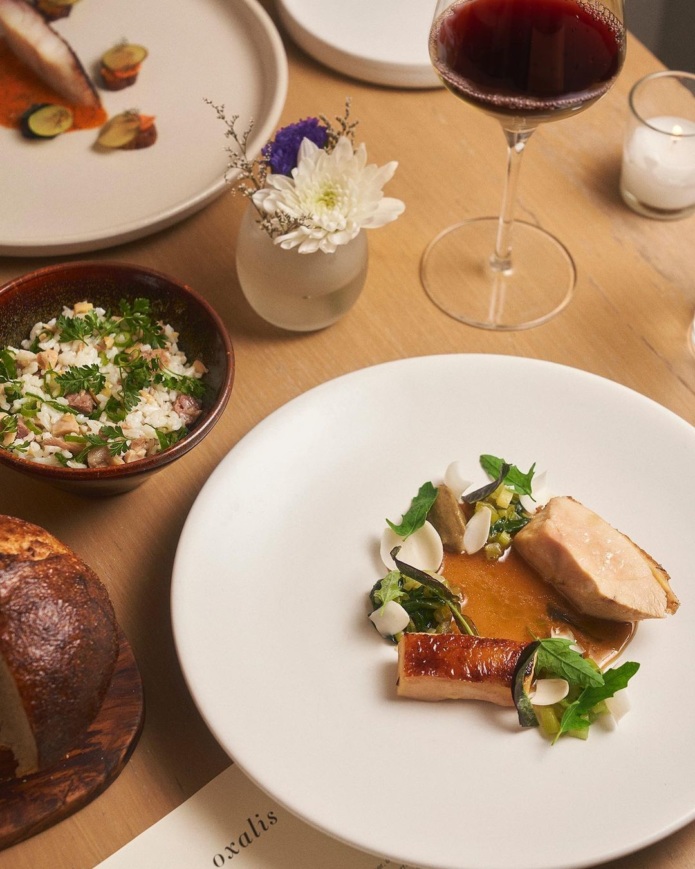
If Tama had one wish, it’d be that more people would learn to love and eat wild plants a bit more.
To her, they’re the food bank of the future: Wild plants obviously don’t need to be cultivated — they’re neither fertilized nor irrigated, and as a result, are less prone to blights and other natural disasters. “Wild foods are not coddled,” she explains. “When I go to the supermarket now, things are so watered down, because everything’s been bred for yield and shelf life.”
That’s why Tama loves working with chefs: because they are just as excited as her to uncover what new and vibrant flavors weeds have to offer. “[They’ll] figure out some way to crack the code on that plant,” she says. “Sometimes it can be at a different time, when it’s underripe, or a different part. And that’s really fun! Because one of the things about when you go to the grocery store, is that somebody has decided when that is good to eat. And it might not be the only time! And we forget the whole lifecycle of the plant.”
“That’s the biggest thing for me,” says Oxalis’ Nico Russell. “Cooking, we’re trying to catch moments, right? We’re trying to catch little seconds of something. [Tama is] one of the only people I’ve talked to about it where we can feel these different things.”
I finally get to see this at Atoboy, where Tama, in true forager fashion, shows up with her signature pink lipstick and dirt caked under her fingernails.
The critically-acclaimed modern Korean restaurant and its sister restaurant Atomix have been ordering a lot of artemisia vulgaris and annua (a.k.a. mugwort and sweet Annie) from her lately, and this is the first time she’s delivered in person since the pandemic hit.
Chef Nate Kuester arrives with a surprise dessert for Tama, setting down a gray ceramic bowl: ginger ice cream the color of milk, in a pool of knotweed soda dotted with green oil made from walnut tree shoots. Tama’s eyes pop wide open.
As Nate explains how chef-owner Junghyun “JP” Park and his team fermented her knotweed for the soda and made the vivid oil from her walnut tree’s green unripe shoots — a wildly flavorful tree part Tama’s been trying to crack herself for years — her grin grows wider and wider.
Nate and Tama quickly talk shop, brainstorming what can be pickled and fermented for next season. “Don’t give this to anyone else!” he says as he leaves, joking (but not really) about her incoming wild beach roses — a regular occurrence when Tama does her deliveries.
She tucks into the dessert, barely containing her excitement.
“Oh my gosh. They did it. It’s brilliant.” She’s beaming. The kitchen team did the seemingly impossible: They turned a weed anyone else would’ve chucked into something not only edible, but incredible — the knotweed soda boasting a rhubarb-like tang that balances off the creaminess of the ice cream, with earthy hints of citrus and pine from the walnut tree oil.
And that’s what makes Tama happiest. That her chorus of chefs aren’t just “traveling the world for some rare, endangered thing,” she says, but are willing to look at what’s right here. To see the potential of wild plants and weeds.
Well, that’s one of two things that makes Tama happiest.
The first is when she’s out in a field, blissfully spending hours foraging in a patch of weeds.
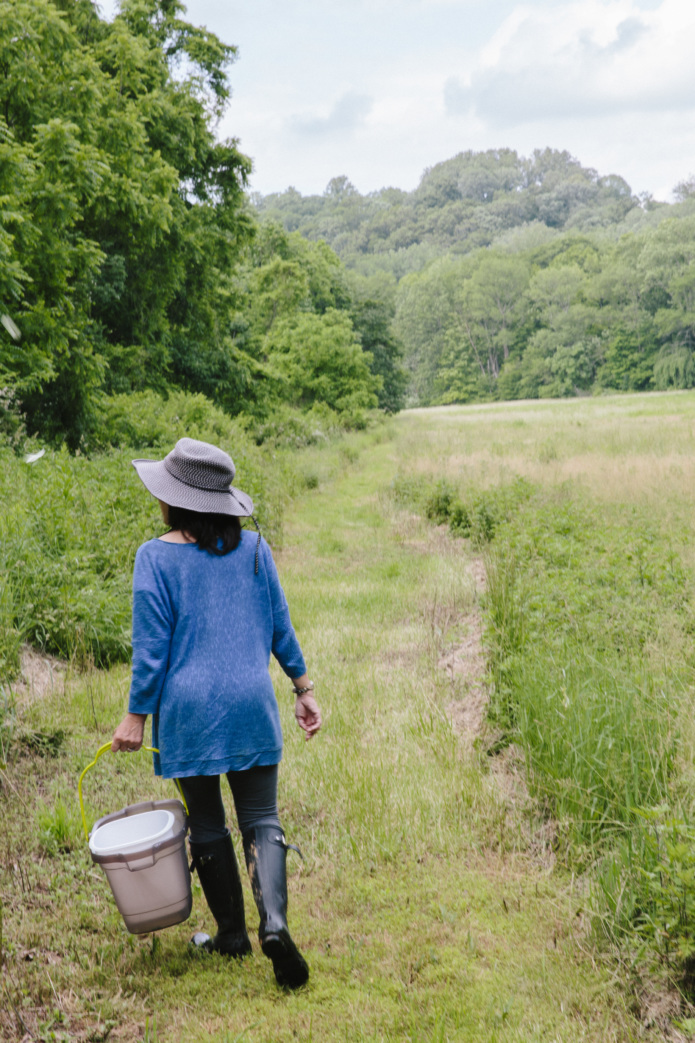
Noëmie Carrant is a Resy staff writer who occasionally makes mugwort soup. Follow Resy on Instagram and Twitter.
Discover More

Stephen Satterfield's Corner Table


















